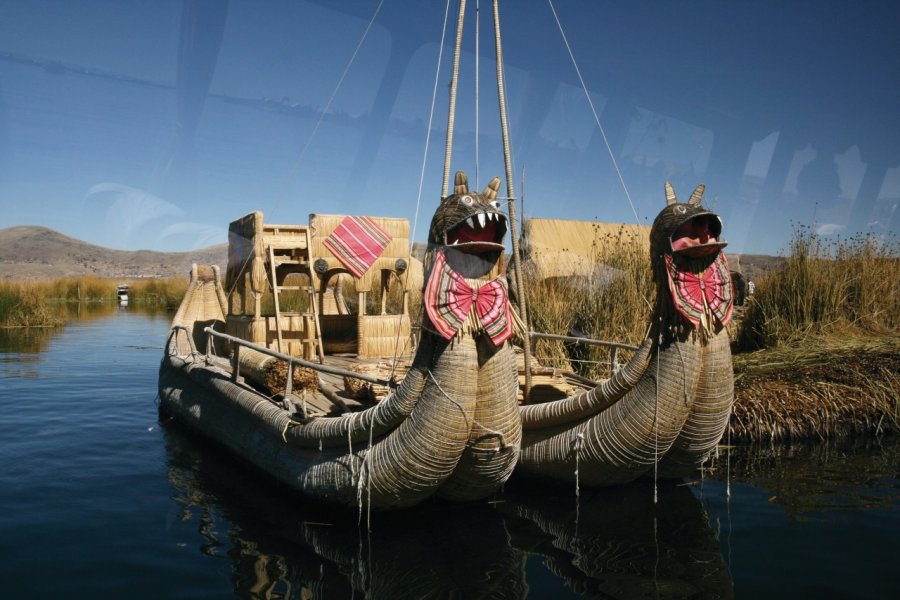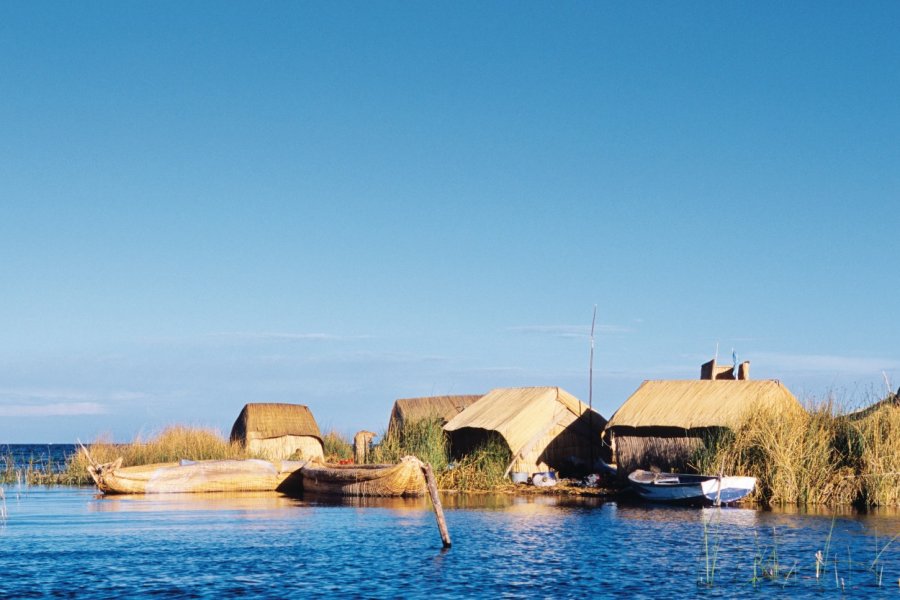Travel Guide Islas Flotantes De Los Uros
Find an accommodation
Advertising
Of the Uros, we know little, except that they surely came from the north of the actual Chile, that they were related to the Puquina of which they shared a language still spoken in Bolivia, and that they had black blood in their veins. The Uros became extinct completely, around 1950, abandoning their land of reeds to the indigenous Aymaras of Puno. The latter occupied the islands, perpetuating the traditions while opening to travelers a unique way of life.The inhabitants live from fishing, handicrafts, hunting and collecting eggs that are sold in Puno. They also eat the white part of the reed, which they call plátano del lago (banana of the lake) and farmed fish, including the trout of the lake Let's see: about sixty artificial islands entirely made of totora (reeds), moored to stakes that prevent them from drifting, and whose area varies from a few dozen to a few hundred square meters. Every week, a new layer of reeds is added to replace the one that has sunk; and every ten years, another island must be moved and built. The floating islands are about 15 to 20 meters long and 3 meters thick
Suggested addresses Islas Flotantes De Los Uros
Weather at the moment
Advertising
Organize your trip with our partners Islas Flotantes De Los Uros
Transportation
Book your plane tickets
Car Rental
Boat rental
Accommodation & stays
Find a hotel
Holiday rental
Find your campsite
Tailor-made trip
Immersion travel
Services / On site
Activities & visits
Find a doctor








